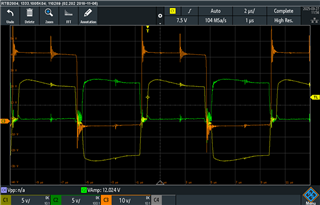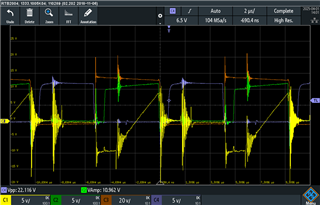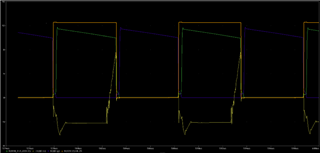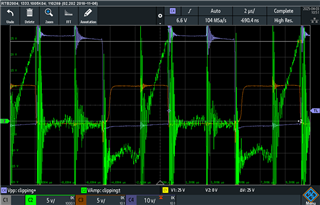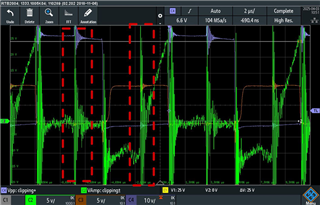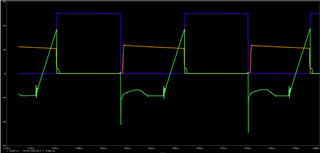Tool/software:
Hello everyone,
I am designing a PSFB converter with a current doubler topology in the rectification stage, using the UCC28951PWR controller. For the rest of the circuit, I am following the topology from the datasheet, where the drivers and the controller are referenced to the secondary ground and the full-bridge MOSFETs are driven through gate drive transformers.
The issue I am encountering is that the full-bridge MOSFETs heat up excessively, quickly reaching 90°C with just one minute of operation and a load of 3 A. Initially, I considered two possible causes:
- The high-side and low-side MOSFETs might be short-circuiting.
- The gate drive might not be fast enough or there could be an issue with the turn-on process.
I have ruled out these hypotheses by analyzing the following signals in the lagging and leading leg:
- Blue: Voltage at the low-side MOSFET gate.
- Green: Voltage at the high-side MOSFET gate.
- Yellow: Voltage at the intermediate node of the branch.
As shown, there is no crossing between the gate signals. Moreover, the waveform indicates that this branch is performing soft switching. First, the low-side MOSFET gate is turned off, and shortly afterward the voltage at the intermediate node changes from 0 to Vin. If I am not mistaken, this behavior is due to the shim inductor forcing the continuity of current, which causes the low-side MOSFET’s capacitance to charge and the high-side’s to discharge. After this process, the high-side MOSFET gate is activated (with ZVS already achieved), and finally, the high-side MOSFET is also turned off under ZVS conditions.
I am attaching the corresponding images for the lagging leg and the leading leg, as well as an image showing the MOSFETs heating up:
Image of the lagging leg
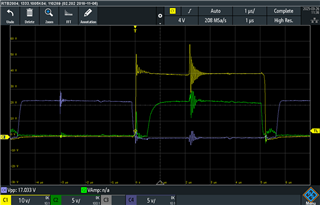
Image of the leading leg
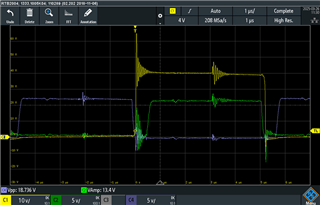
Heating of the mosfets
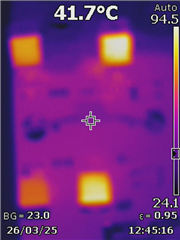
(Lagging leg-Right side / Leading leg-Left side)
Although the previous first two images show considerable noise, I performed a test where I connected together the primary and secondary grounds, driving the low-side MOSFETs directly from the driver. For the high-side MOSFETs, I still used the gate drive transformers to generate the 12V from its source to gate. In this test, the noise observed in the high-side MOSFETs was almost negligible, yet the heating persisted.
Finally, I used two half-bridge drivers to drive the MOSFET gates directly, bypassing the transformers. This way, I ruled out that the problem was caused by the gate drive transformers, as well as the possibility that the noise was due to a layout issue (since in this case the traces are “flying”). However, the result remained the same.
I believe I may be overlooking some important or fundamental detail in the design. Has anyone faced a similar problem or could suggest any clues to help identify the cause of the overheating?
Thank you very much in advance


